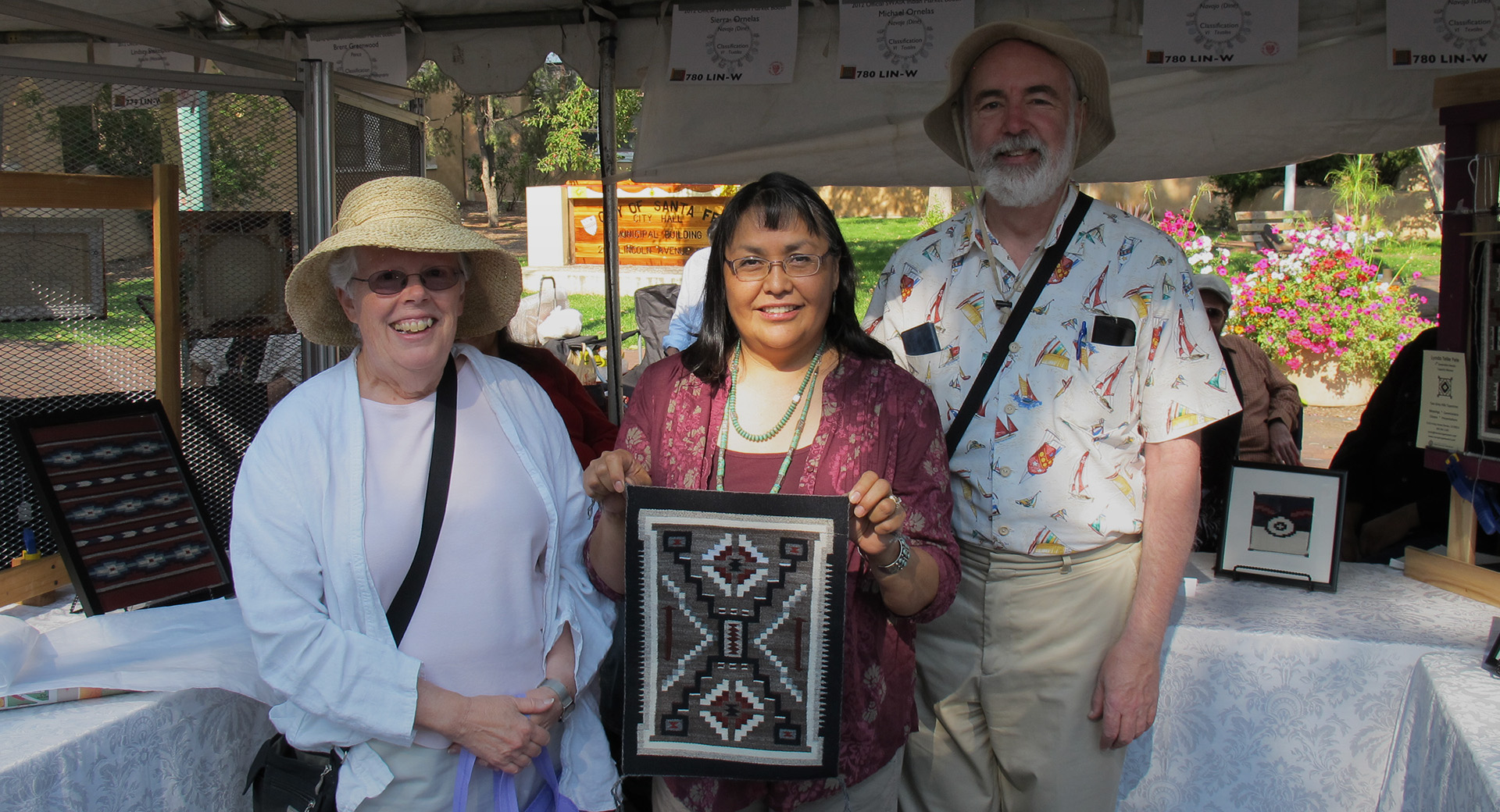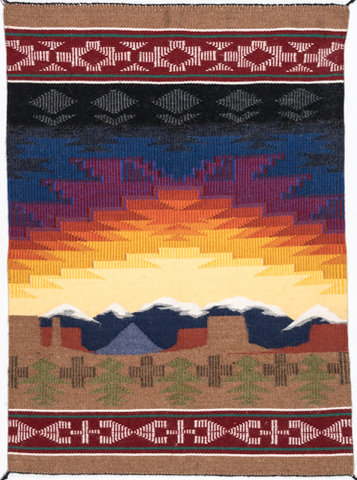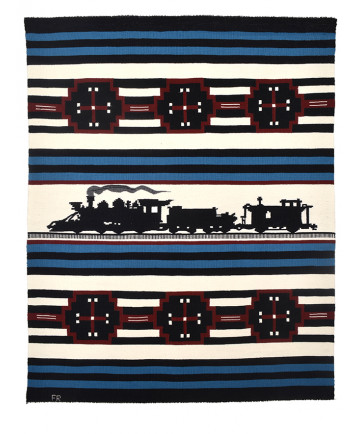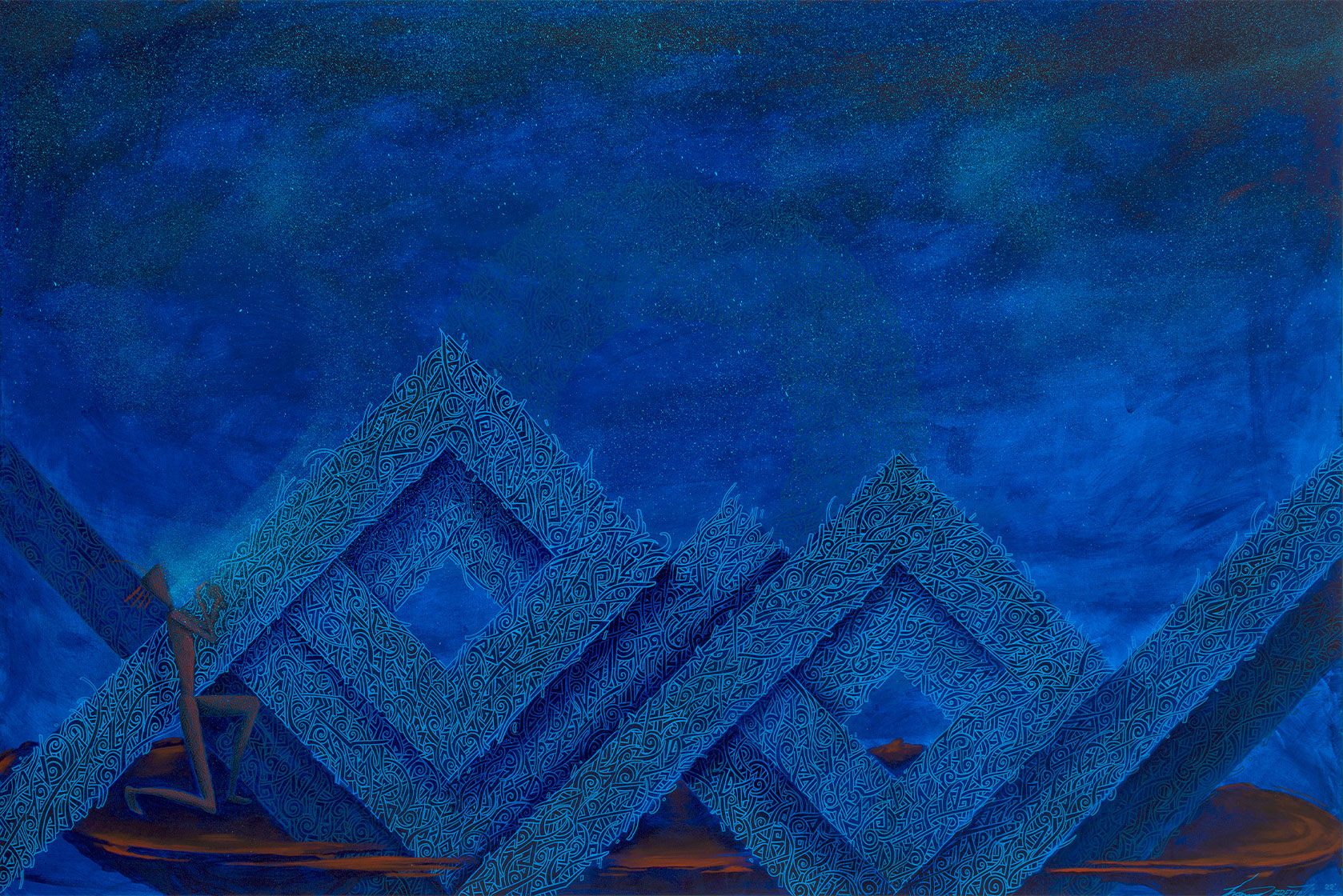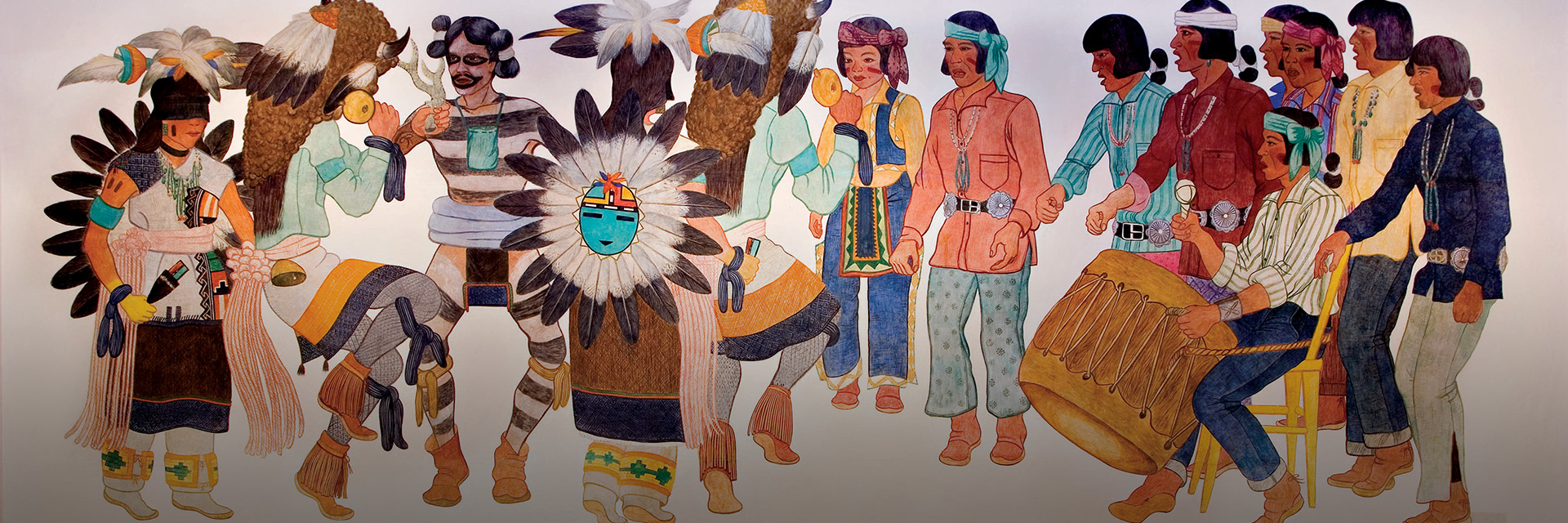Julie Dalrymple
My late husband Mark and I enjoyed traveling to places with great scenery, especially the Pacific Northwest and the Southwest. And we liked to bring home things that reminded us of our trips: honey, cheese, fabric for shirts for Mark, and beautiful things that would look nice in our house. We gathered Northwest Coast carvings, Zuni fetishes, Navajo silver seed pots and jewelry, a little Pueblo pottery, a few Inuit masks and some Navajo sand paintings, along with Navajo rugs. We really liked three-dimensional, useful work.
We had a few miscellaneous art pieces in 1989 when we made our first trip to the Southwest and bought our first rug (and then two more), along with four pottery storytellers, a sand painting and a Zuni fetish. That first rug, bought at Garland’s, was woven by Helen Walker from hand-spun, hand-carded wool. It has a wonderful texture as well as design. I still have it.
We had already developed an appreciation for Northwest Coast nations’ art (starting on our honeymoon in 1969), and I think the same strong design elements connected us emotionally to Navajo weavings. So we continued trips to the Southwest and Northwest and continued to find art that appealed to us. In 2005 we went with friends to our first Inter-Tribal Indian Ceremonial in Gallup. High on the wall was the First Prize and Best in Category, a hand-spun and vegetable-dyed rug by Mae Jean Chester. We asked them to take it down. I think it was the first rug that made me think about the person, the artist, who wove it.
We began to realize the work and artisanship that go into the best rugs. Mark was a recording engineer for the Music Department and the Memorial Church at Stanford University, and he built a lot of equipment for them. I was a librarian for the Santa Clara County library system and sewed and made beaded jewelry. As makers ourselves, both of us appreciated good design and attention to detail. We also developed a few quirks: Mark loved rugs with trains and didn’t like pictorials with stylized perspectives. I liked a few rugs mostly because I loved the colors used, but neither of us liked too-bright colors. Somehow our tastes were very similar, making it all too easy to find rugs we could agree on. However, we had a three-bedroom house with normal-height walls (and cats), so we wouldn’t buy rugs that measured longer than 5 feet vertically.
In 2011, we first bought rugs from the Heard Museum Shop, visited trading posts on the reservation, and bought a rug online (also from the Heard Museum Shop). We first attended the Crownpoint Weavers Auction and the Santa Fe Indian Market in 2012. By the end of that year we had 43 rugs. Once we started online shopping, we discovered Steve Getzwiller’s Nizhoni Ranch Gallery, so we bought a first rug online and then visited in 2013. Steve’s expertise and relationships with the weavers taught us a lot about Navajo weaving. Mark and I were both introverts, pleased to meet weavers and hear what they had to say, but shy about asking questions or talking about much beyond how we admired their work, so the relaxed setting at Nizhoni appealed to us. We also visited our first Heard Indian Fair & Market and our first Hubbell auction that year. We were happy that buying contemporary weavings helped support the weavers and the continuation of a cultural tradition. And we filled our house with beauty.
Sometime that year we ran out of space on our walls. What to do? I suggested that if we called ourselves collectors, we could buy more rugs and rotate them on the walls. Yay! Until 2017, we continued trips to shops, auctions, trading posts and markets. When Mark fell ill, we could no longer travel, but it was wonderful that he and I could continue to collect by shopping online.
We had talked about what to do with our collection, as no one in our families shared our interest. Because we had enjoyed visiting and shopping at the Heard Museum and taking trips with the Heard Museum Guild, we decided that we would like to offer much of our Southwestern art to the Heard Museum. Fortunately, they accepted. I kept some of my favorites, although I do plan to leave them to the museum in my will. I’ll just share two more of the rugs I still have. The first (from the Heard Museum Shop) is a train pictorial rug by Florence Riggs that I hung where Mark could see it from his sickbed. The second is a sunrise pictorial by Bobbi Jo Whitehair that lifted my spirits during those dark days and still does today.
